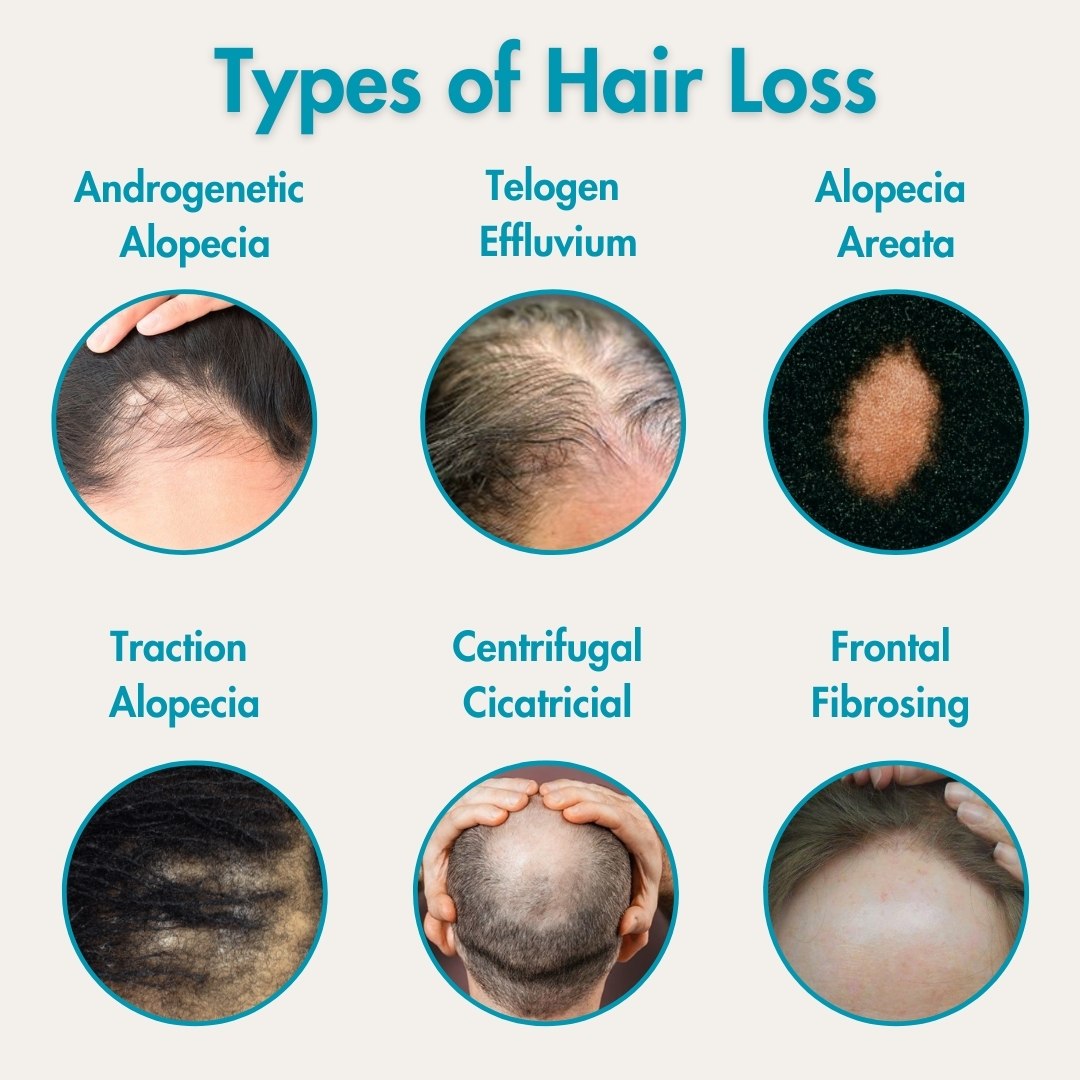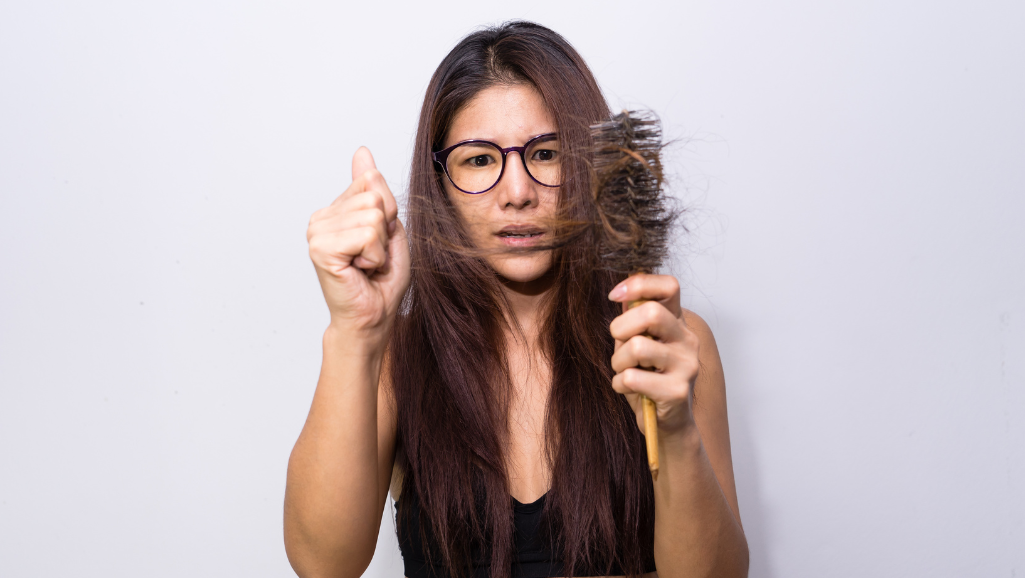Hair loss, a condition often cloaked with both social and personal implications, is a ubiquitous concern affecting a myriad of individuals, irrespective of their gender or age. Approximately 35 million men and 21 million women globally find themselves confronting some loss of hair, revealing the broad impact of this issue both psychologically and emotionally. Unlocking the mysteries of hair loss, exploring its diverse types, and deciphering its causes not only enlightens individuals but also equips them with the tools to manage this condition with efficacy and emotional wellness.
In addressing hair loss, it’s vital to comprehend the basics. Phrases such as “alopecia” and “baldness” have found a common place in our vernacular, each referring to varying nuances of the condition, with alopecia often used as the standard medical term. The journey of hair loss tends to be a gradual one, materializing as an increased collection of strands in your brush, subtle or explicit changes in hairline, the emergence of bald patches, or a universal thinning witnessed over a period of time. The early recognition of these subtle shifts and warnings is pivotal in instigating a prompt and effective intervention strategy.
Underlying Causes Behind Hair Loss
Understanding hair loss causes is complicated due to many factors. Nutritional imbalance, encapsulating deficiencies or surpluses in certain nutrients such as essential fatty acids, proteins, iron, and vitamins, often emerges as a significant triggers. Moreover, hormonal irregularities stemming from conditions like hypothyroidism, hyperthyroidism, PCOS, and other endocrine abnormalities may pave the way for hair loss by disrupting hormonal equilibrium. Medications, varying from anti-hypertensives and statins to anti-coagulants, may inadvertently list hair loss as a potential side effect. Furthermore, external contributors like age, genetic predispositions, infections, pregnancy, cancer, and even select hairstyles or suboptimal hair care practices, have been identified as precipitators.
Different Forms of Hair Loss
- Androgenetic Alopecia: This widely prevalent, genetically-influenced type manifests differently in men and women, potentially leading to receding hairlines and bald spots in men and a noticeable thinning in women.
- Telogen Effluvium: Defined by a pronounced shedding, this type can often be ignited by metabolic stressors, hormonal perturbations, or specific medications.
- Alopecia Areata: This autoimmune variant prompts the body to wage war against its own hair follicles, culminating in abrupt hair loss, generally observable in discrete, circular patches.
- Frontal Fibrosing Alopecia: Predominantly targeting the front and sides of the scalp, eyebrows, and underarms can also be affected by this condition.
- Central Centrifugal Cicatricial Alopecia: Predominantly affecting women of African descent, this type may be linked to specific hair products and styling practices.
- Traction Alopecia: Birthed from the consistent pulling of hair, due to certain hairstyling practices, this type highlights the criticality of adopting gentle hair care approaches.

In delving deep into the realm of hair loss, you will discover many different contributing factors and manifestations. Thus, forming a lucid understanding not only of its prevalence and basic premises but also of its underlying causes and varied types becomes a linchpin in crafting robust, tailored strategies to manage and navigate through the challenges posed by hair loss.
Treatment and Management
Navigating through the ordeal of hair loss not only takes a physical toll but also potentially inflicts a profound emotional and psychological impact, predominantly affecting one’s self-esteem and overall self-perception. Fortunately, a wide spectrum of treatments and management strategies has surfaced, granting a beacon of hope for those grappling with this condition. Luckily many hair loss conditions can also be treated remotely online by a dermatologist. In the subsequent paragraphs, we shall delve into a multitude of methods aimed at hair loss treatment and management, extending from medicine interventions to alternative and home remedies.
Medicinal Interventions:
Within the realm of medications, various options like topical Minoxidil have garnered widespread recognition as reliable allies in managing hair loss. Administered directly to the scalp, Minoxidil, with consistent use, has demonstrated a capability to provide tangible improvements in both mitigating hair thinning and promoting regrowth. Similarly, oral Finasteride, predominantly utilized by men, has proven its impact in not only curtailing more loss of hair but also facilitating new hair growth, with results commonly becoming evident within a six to twelve-month window. Antiandrogens, such as Spironolactone and certain oral contraceptives, have showcased their efficacy in addressing female pattern hair loss by modulating androgens, subsequently preventing hair follicle damage.
Cosmetic Procedures:
In the avenue of cosmetic procedures, techniques like PRP (Platelet-Rich Plasma) Therapy have ascended to prominence. This entails injecting PRP into the scalp, aiming to stimulate hair growth by enhancing the function of hair follicles. Mesotherapy, which involves the injection of a blend of vitamins, minerals, and amino acids into the scalp, aspires to ignite hair growth while diminishing hair loss. Moreover, surgical approaches like hair transplantation, which involves transferring hair follicles from a donor area to impacted regions, have emerged as effective stratagems in addressing hair loss in a myriad of instances.
Home-Use Devices and Alternative Methods:
When considering home-use devices, FDA-cleared LED devices, such as laser combs, helmets, and caps, have emerged as convenient instruments for home-based treatments, albeit with variably effective results. Transitioning to alternative methods, options like hair extensions provide a means to mask thinning hair, not by treating, but by offering a cosmetic camouflage. Furthermore, wigs, available in a plethora of styles and materials, have perpetually stood as a timeless and reliable solution for managing the visual impact of hair loss.
The utilization of popular hair care products like serums, which encompass ingredients aiming to foster hair growth and augment hair health, offers an auxiliary route in hair care management. Peptides, specifically copper peptides and biotinyl-ghk, with their profound biological impact, can potentially stimulate hair follicles and endorse regrowth. Conversely, exploring the sphere of natural remedies introduces us to methods like scalp massages, known to amplify blood flow to the scalp, and thus have secured a spot as a timeless home remedy.
It’s imperative to underscore that the efficacy of treatments can be distinctly individualistic, heavily contingent upon the specific type and underlying cause of hair loss encountered. As such, the guidance of a seasoned dermatologist emerges as crucial, facilitating the identification and implementation of the most suitable treatment plan, thereby ensuring optimized results tailored to one’s distinct circumstance. Whether opting for the widely accredited Minoxidil or exploring natural remedies, selecting an approach in managing hair loss ultimately evolves into a deeply personalized decision, anchored in individual experience, preference, and effectiveness.








